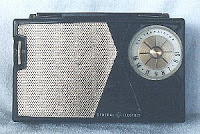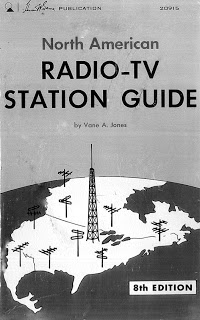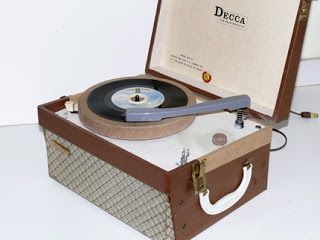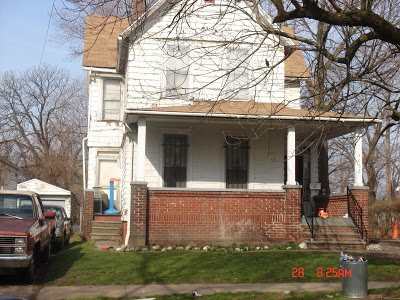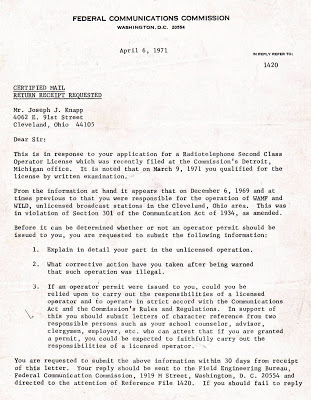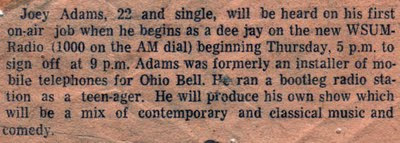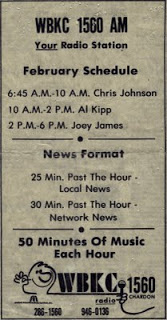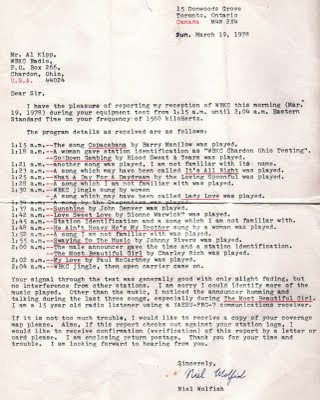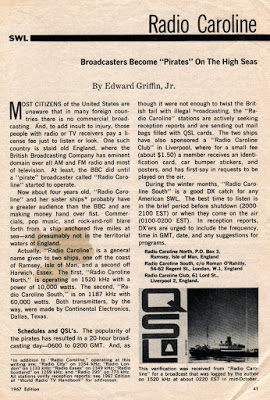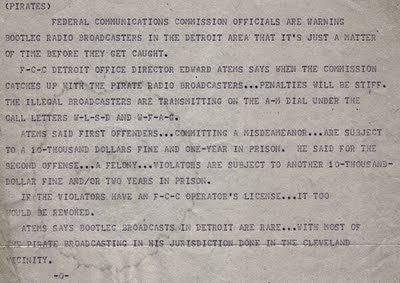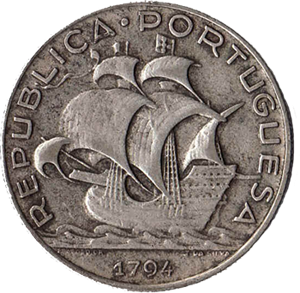
I’m really looking forward to the new Pirate Radio movie! Let me tell you why…
I fell in love with radio before I even started school. My mother used to put her little green General Electric transistor radio in my bed when I had trouble sleeping. She’d usually tune it to the beautiful music station but that never seemed to sooth me. So, she tried different stations all the time. My earliest memories include falling asleep to songs like I Love Paris and Oh My Papa. I got to know Dean Martin and Frank Sinatra very well, but I also got to hear some really cool Rhythm and Blues spun by the legendary Alan Freed. I even remember trying to talk like the radio announcers! As I started to grow older, I spent even more time listening to the radio — night and day. I’d tune around the dial trying to find as many different stations as I could, and I especially liked to find ones that came in from far away on the “skip” at night. I came to LOVE radio; and I knew that someday I would be working at a radio station.
Rock and Roll music got into my bloodstream at a very early age, too. My Grandmother owned a little diner where the local teens hung out every afternoon, playing their favorite songs on the juke box. I spent a lot of time there, either helping Grandma by stacking pop bottles or sweeping the floor, or just hanging out enjoying some of her delicious homemade Chili.
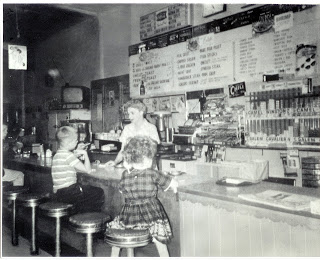
I first discovered the FM band through my Grandmother’s DuMont “Dog House” television set. It had a continuous tuner to let you hear aircraft bands and FM between channels six and seven. Very few people even knew that FM existed back then, but I found it fascinating. I remember tuning in some early experimental “stereo” broadcasts where the left channel was broadcast on AM and the right channel was heard on an FM station. Hearing stereo sound for the first time really blew my mind!
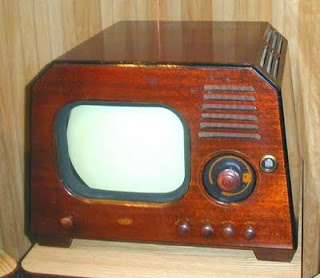
My dad thought my love for radio was a very interesting hobby, so one day he took me to a furniture store in downtown Cleveland and bought me a much bigger radio for my birthday. It was a black and silver RCA transistor table model that could tune in the AM and FM bands. That radio was really sensitive, but it had some problems at first. It had an odd crackling noise that would slowly build into a steady and loud buzzing sound. If I tapped on the volume control a few times, I could make it stop. My dad took it back to the store several times asking them to fix it, but they never did. My dad was a radar technician during World War II, so he decided to take a shot at fixing it himself. He let me watch as he took that radio apart. He showed me that the volume control connections had “cold” solder joints. I watched as he heated up his soldering iron to melt a little more solder on each connection. I remember how cool it was to watch the smoke curl up and smell the burning resin. I knew right then and there that fixing electronic stuff would somehow have a place in my future. Oh, and the radio worked perfectly after that!
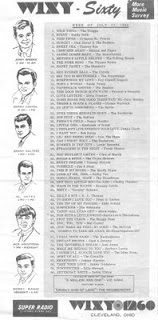
I was a huge fan of the Top 40 stations in Cleveland, especially WIXY 1260, but I spent my nights checking out similar stations from Detroit/Windsor, New York City, Chicago, and many other places. I also wanted to learn more about electronics, so my dad took me to the public library where we checked out the Amateur Radio Relay League Handbook. I read that thing from cover to cover, struggling to understand as much of it as I could. I learned that there were Amateur Radio Operators who ran their own transmitters and talked with each other using both Morse Code and voice. This seemed very interesting to me. I even found a book at the library that listed every radio station in the USA. I was the only person who ever checked that book out, and it was almost constantly checked out to me! I even talked my dad into buying me a copy of my own for my birthday. My mom thought it was a pretty weird present for a little kid!
The Amateur Radio crowd exchanged something they called QSL Cards with each other after making contact with someone new. Commercial radio stations, back then, would also send these QSL cards out to distant listeners. Tuning in far away radio stations was actually a hobby that was older than commercial broadcasting. Distant radio listening was called DX-ing, and those who listened were called DX-er’s. These folks tried to collect as many of these QSL cards as they could, mainly from International short wave radio stations. Some, however, focused on commercial stations on the AM broadcast band. To get one, all you had to do was hear a far away station, wait for them to identify themselves (which was required at the top of each hour), note the date and time, write down enough details about the broadcast to prove you’d actually heard it, then mail your reception report to the station. These reports usually got routed to the Chief Engineer, who would then take the time to confirm your report and send you back an official QSL card. My very first one came from WRVA in Richmond, Virginia, and I was really excited to find that in the mail! I became obsessed with these things, eventually filling a whole wall in my bedroom with QSL cards and letters from AM radio stations all over the USA and Canada.
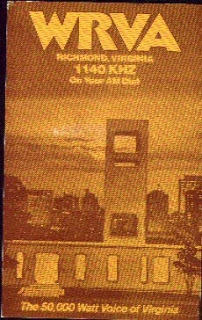
My Uncle George was a fairly odd guy. He never married, never had a steady job, and lived his entire life in an upstairs bedroom at my Grandmother’s house. He liked to collect things like old radios and talking machines, coins, car parts, and more. He gave me some of those little blue coin books and helped me fill them with duplicates from his collection. Every night, he’d carefully search through all the coins in the cash register at my Grandma’s diner and he taught me how to spot the better ones. Back then it was still easy to find really old coins in your change because coin collecting was still an uncommon hobby. Uncle George was also a part time disc jockey on a Country and Western station in nearby Akron. He’d bring home the rock and roll records and stuff them into a closet; and he’d give extra copies to me. He’s really the guy who started my obsession with vinyl records, and he was the first person I ever knew who actually worked in a radio station!
One night in late 1963, while tuning around on the radio, I happened upon something very strange. There was a radio station that sounded very far away, but it didn’t identify itself in the usual manner at the top of each hour. They were playing rock and roll music, didn’t play any commercials, and called themselves KDJ at 540 on the dial. The disc jockeys sounded young and unprofessional. I had tuned in my very first “pirate” radio station! Eventually, I found more illegal stations, usually just past the top of the AM radio dial (back then) at around 1610 KHz. Back then, there were radio navigation beacons called LORAN broadcasting up there, and these stations would interfere with each other. If the pirate station was really weak, you’d hear this interference as a regular “beep” over the top of the audio. The kids who ran these stations were older than me, but hearing them play records and talk on the radio gave me a burning desire to get on the air myself. Somehow I knew I’d find a way build my own radio station!
There was a neighborhood candy store and soda shop where where kids liked to hang out after school. I’d stop in there on my way home from school to grab a Hershey’s bar and a bottle of Pepsi, and maybe play a couple games of pinball. One day, when I was eleven years old, I spotted a magazine cover in the rack that read “Build Your Own AM Radio Station!” You can’t imagine how excited I was to see this! Instead of buying my usual junk food, I spent every penny I had to buy that issue of Popular Electronics magazine. I rushed home and tore through it looking for the magic plans that would get me on the air. I had visions of being on the air that very night, broadcasting to all my friends!

My parents didn’t have a lot of money, but I did get a small allowance from them to buy lunch at school and I earned a little more from my early morning newspaper route, and from doing odd jobs for the neighbors. But some of the parts I needed would cost more than I could afford. I asked my dad if he’d lend me some money and showed him what I wanted to build. He told me that I could probably get most of the parts on that list by taking apart broken radios and televisions that people would leave out on the curb for the junk man. He also suggested that I ask my Uncle George, because he liked to tinker around with old radios and had several burned out ones laying around that he’d given up trying to fix. Over the next few trash days, I dragged my little red wagon all around the neighborhood collecting all the old radio and television sets I could find. I took them home, stripped out the parts, and started building a collection of resistors, capacitors, transformers, tubes and sockets, potentiometers (volume controls), and other assorted parts. I didn’t know what they all did at the time, but I did take the time to read about them in the Amateur Radio handbook!
I managed to scrounge up everything I needed, except for one special tuning coil and an odd little capacitor. When I showed my dad what I needed, he drove me over to Radio Shack and bought the two remaining parts for me. I couldn’t wait to get home and start putting this thing together!
I got everything hooked up according to the schematic in the magazine. I followed every instruction to the letter. I carefully soldered every connection, using my dad’s trusty Weller soldering gun! When I was finished, I plugged it into the wall, grabbed my radio, and started frantically searching the dial for my station — but it was nowhere to be found.
Can you imagine my disappointment? I double-checked every connection. My dad took a look at it and suggested that maybe one of the parts I had used was bad. It only had one vacuum tube, a 12AX7 triode. First, we removed this tube and tested it at the drugstore. Back then every drugstore had a tube tester and replacement tubes to help people fix their own television sets when they broke down. Most television problems in the early years were caused by weak or burned out vacuum tubes. Unfortunately, my tube tested fine, and my heart sank even further.

We went back home and my dad explained that we might be able to take one of the old junk radios I’d scrounged up and rewire it to make it transmit a signal using the beat frequency oscillator. I was so depressed though, I wasn’t really paying much attention to his idea. He tried for an entire evening to rewire an old radio chassis, but he never got it working as a transmitter. I went back over to my little contraption, built mostly from spare parts, and started looking at every connection again. That’s when I noticed that a couple of connections on the tube socket had somehow been bridged together by an excess strand of solder, shorting them out. I cut that solder connection and tried it again. This time, to my amazement and delight, I heard a signal on my AM radio — loud and clear!
Now I needed to figure out how to get music to play through my little transmitter. The magazine article showed how you could connect it to the speaker output of your record player, so that’s what I did. Soon I was listening to my own records playing on the radio. You just can’t imagine how excited I was to hear that. I was eleven years old, and I had just built my own radio station. Now all I needed was a microphone!
The record player had an auxiliary input on the back, but I had no microphone. I decided to take apart an old telephone and use the mouthpiece from that. But it didn’t work. No sound came out when I switched to the auxiliary input. My dad explained that the carbon microphone in a telephone needs a constant direct current flowing through it in order to work. The phone company provides that through the telephone line. It’s 100 volts DC and it’s switched on through the microphone when you pick up the handset. It’s amazing that I didn’t kill myself, but I managed to hook up 90 volts worth of batteries and run them through the microphone to get it working. I ran that through a transformer so it was isolated from the record player input. Otherwise, according to my dad, I’d probably blow up the record player! When I switched over to auxiliary now and spoke into the microphone, I heard myself talking on the radio! My first instinct was to do a station identification. Since I had no actual call letters, I just tossed a “W” on the front of the first three letters of my record player’s band label, “Decca.” The first words I ever spoke on the radio were: “This is radio station WDEC in Cleveland Ohio!”
Once I had the radio station set up, I’d rush home from school every night, fire up the transmitter, put on an album, and then ride my bike all over the neighborhood testing to see how far I could hear it. I spent a lot of time experimenting with the antenna wire to see if I could extend my coverage area. But no matter what I did, I couldn’t hear it more than a couple blocks away. But I was finally on the air and I couldn’t be happier.
My obsession with radio grew even bigger. Soon I found myself shoplifting 45 RPM records from the local department store to feed my habit. That ended abruptly, however, when my brother and I got caught and sent to the police station where we waited for our parents to pick us up!

One evening, while I was listening to one of the other pirate stations, I heard them give out a phone number asking listeners to call and make requests! I called that number and reached a kid who’s voice I’d heard on the station. The phone line was really strange. Every few seconds you’d hear a loud “click-click” that would interrupt the connection. I learned from the pirate broadcaster that these were “test lines” used by Ohio Bell workers to communicate with each other while working in the field. Basically, you could call any three-digit exchange followed by 9883 and get a 440 cycle tone, which was interrupted on a regular basis by those clicks. While you were listening to that tone, if anyone called the same exchange followed by 9884, the tone would go away, and you would be connected to each other. The kids who discovered these special phone circuits called them “Clique Lines” and used them to meet new friends from all over the city. You could say it was a 1960’s version of Facebook! One great feature of these Clique Lines, at least for a pirate radio broadcaster, was that you could use them for a request line and nobody would know your real phone number. Very cool.
This is a very rare recording indeed! Listen now to an ACTUAL bootleg radio station that was broadcasting in Cleveland circa 1968. You can hear a lot of interesting stuff on this recording. First of all, you’ll hear a station ID for the legitimate WAKR-AM in Akron which was operating on 1590 AM. Even though they claim to be broadcasting on 1610 AM, this bootleg station was actually jamming WAKR at the time! Then, you’ll hear the announcer identify the station as WXEL Radio, and he asks listeners to call in using one of the Clique Lines. Then, you’ll hear a listener interacting with the guy on the air. But, best of all, you will actually hear this station get SHUT DOWN by the FCC! You’ll hear the announcer set the phone down and run off to answer the door! At the very end, you’ll hear a little bit of an old WAKR jingle playing in the background. I left in all the static and noise so you could enjoy this as if you were listening to it back then. The beat tones and beeps you hear are actually interference from the LORAN navigational beacons.
I became a regular listener to a particular pirate station which called itself WMCC, or “Wim-Cee” which was a take-off on the popular WIXY “Wix-ee” radio in town. One night WMCC ran a contest called Name That Tune. They played a few seconds from a record, then held a microphone up to an electric fan while letting the spinning blades hit against a pencil to make a clicking sound like a Big 6 wheel. They’d put a caller on the air and ask them to identify the song before the clicking sound stopped. I managed to get through, identified the mystery song in time, and won the contest! I was told that someone would come to my house to deliver the record. Back in those days, we weren’t all that concerned about security, so I freely gave them my home address. Then I waited to get my prize. After a few weeks, I still hadn’t heard from anyone. I wasn’t upset, but I did call the station to ask about the prize. They were very nice about it and apologized. They told me that someone would drive right over to my house to deliver it. When a car arrived about a half hour later, I went outside and met up with a teenager named Bob who handed me a really badly warped Beatles 45! He told me the record I’d won had been sitting in his car all this time and had been warped by the sun. He had no other prize to give me. I asked him where the station was located, but he wouldn’t tell me. All he would say was that it was located somewhere in Parma Heights and run by a kid named Jim. I thanked Bob, gave him my phone number, and asked him to tell Jim to call me.
Jim did call a few days later. I told him how amazed I was that I could hear his station all the way from Parma Heights. I lived at 91st and Harvard Avenue on the east side of Cleveland, which was about seven miles away from his house. He told me he used a 90-watt World War II US Navy surplus transmitter called an ARC-5. He used a 40 foot vertical mast as an antenna with a glass insulator keeping it off the ground. I was completely fascinated by everything he told me. I described my station to him and he said that I was probably running less than one watt of power. He offered to come over to my house to help me get a station set up just like his. Of course I agreed! That weekend, his dad drove him over to my house. We were both around 13 years old and neither of us could drive yet!

We took a bus ride to the Army Surplus store where he helped me find a suitable ARC-5 transmitter of my own. We also picked up a power supply and modulation transformer for it. The whole mess cost me about $5. We got back to my place and started putting it all together. We ran out of time, but he sketched out some notes so I could continue without him. I managed to get everything set up the way he described. When I plugged it in, naturally it didn’t work!
Jim came back to my house the next weekend and took a look at it. He told me my work was pretty sloppy and showed me how to take my time and do a better job. He rewound a coil, re-soldered some connections, and got it working. It wasn’t much stronger than my little one-watt station at first. Jim told me that my antenna was at fault. I had used a big length of really thin wire that I had unwound from an old television flyback transformer. That went through a hole in my basement wall, up the side of the house, across the drive to a tree, and then from tree to tree across my back yard. The signal never made it past the hole in the basement wall. I didn’t insulate the wire, so it was simply grounded out. Jim suggested I get some TV antenna mast and make an antenna like his. We went and got some tubing from somewhere and I moved the transmitter up to my bedroom and ran the antenna wire through an open window to a 40 foot mast just outside. That made all the difference in the world! Jim then showed me how to “tune” the antenna using a tapped coil and a florescent light bulb. Basically, you just held the bulb up near the antenna mast and changed the tap to different positions on the coil until the bulb lit up as bright as it would go. Yes, the bulb lit up IN MY HAND without being connected to any power source. How cool is that?
This is what my parent’s house looks like today near East 91st and Harvard Avenue in Cleveland. My bedroom window was just above the front door, and my 40 foot antenna mast sat on that porch roof.
[June 2018 Update: This house has been torn down. All that’s left today is an empty lot.]
Jim also showed me how I could touch the antenna mast with my moistened finger and get a little arc of electricity to jump over and burn little marks in my skin. Hey, for a couple of 13 year old boys, this was serious FUN! Before Jim left, he told me I needed to drive the plate modulation transformer with a lot more power than my record player could produce. I needed a 60 watt audio amplifier to get the job done and, until I got one, all I’d have was a very strong dead carrier. I got on my bike and drove all over the neighborhood listening to a nice clear signal everywhere I went. I went a mile in every possible direction and it was still strong and clear. Now I needed to find that amplifier!
I had my dad drive me to the local audiophile shop where they sold used hi-fi equipment pretty cheap. I found a Dynaco amplifier that would do the job and bought it for around $10. When I got home and hooked it up, it worked perfectly. I was now on-the-air again, but this time sportin’ 90+ watts of power!
My station became WAMF-AM at 1610 on the dial. I had my friends come over and take turns doing radio shows every night. Jim could hear my station from his house, just as I could hear his from mine! We got to be much better friends, and we both continued to upgrade our pirate radio stations in a constant but friendly battle to out-do each other. At some point we began working together on a much more powerful pirate station, this time running 1500 watts on AM, and even simulcasting with 3000 watts on FM — in stereo! Now you could hear our little “bootleg” radio station all over Cleveland, just like one of the commercial stations. Of course, the FCC could hear it too, which kept us both on edge — for good reason: By this time, each of us had already been caught and shut down by the Federal Communications Commission!
On the evening of 6 December 1969, while I was still running my 90-watt station, FCC engineers from Detroit came into Cleveland looking to shut down the nearly 100 pirate stations that were operating at the time. They tracked down our stations and shut us all down. In my case, the engineer came walking right into my house without a warrant, right past my dad who was sitting on the couch watching television, and started searching for the transmitter. I can still hear my brother Steve yelling up the stairs, “Hey Joe, there’s a man here to see you about your radio station!” Before I knew what was going on the Feds were upstairs and standing in my bedroom! The FCC engineer took over the microphone and made an announcement that went something like this: “This radio station has been operating without the necessary authorization from the Federal Communications Commission and is herby being closed down.” At that point he ordered me to kill the power, which I did. Then he proceeded to ask me a whole bunch of questions.
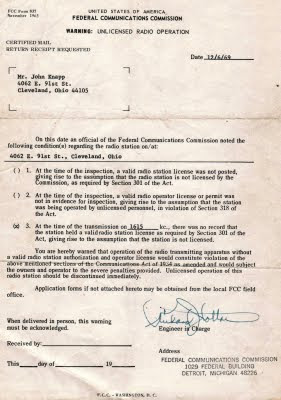
It was pretty clear he didn’t believe that I’d built the station on my own. He was obviously trying to find out who sold it to me. I kept telling him that I built it myself. When he started asking really technical questions, I answered every one of them with answers like, “It’s a Class C output stage with 600 volts on the plates of two 813 pentodes.” I was 16 at the time, and this FCC engineer was clearly impressed. One of the last things he said to me before he left was, “You know kid, if you’d brush up on the laws, you could do this kind of thing for real.” That’s exactly what I wanted to do! But, it took a bit longer to get the pirate radio blood out of my system.
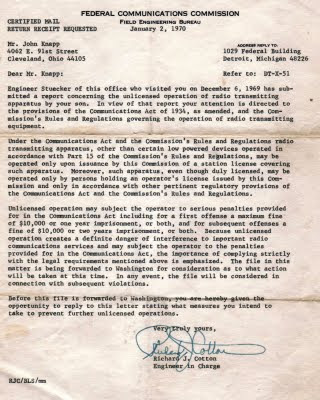
Jim and I remained friends for many years. Eventually, we both found jobs in the radio industry and, at one point, we were each the Chief Engineer of competing Cleveland radio stations. Our friendly competition now extended to audio processing, with each of us trying to make our stations sound louder and cleaner than the other! Jim was satisfied to stay on the engineering side of radio, but I learned electronics so I could get on the air. I wanted to be a disc jockey at a “real” radio station!
This is the letter I got from the FCC after passing my license test. They refused to grant my license until I wrote a letter to admit and detail my ‘crime’ and explain what I’d done to take apart my transmitter. They also requested three character reference letters. Since I was a minor at the time, this is addressed to my dad.
As the FCC engineer predicted, I managed to pass the test to get a First Class Radiotelephone Operators License while still in high school. You had to be 18 years old to qualify, and I took the test on my 18th birthday. I passed it on the first try. The questions seemed really easy! I found out later that people went to school for two years to learn enough to pass that test, and many of those who tried failed on the first attempt. The FCC hadn’t ignored the fact that I’d been caught running a pirate radio station. In order to get my license, I had to send them a letter to acknowledge that my station had been shut down and dismantled. I also had to provide three letters of reference from non-family members who would vouch for my character. I followed all their instructions to the letter, and they granted me a probationary license. It was good for just one year and, if I could get through that first year without breaking the law, I’d get a regular license and the usual five-year renewal.
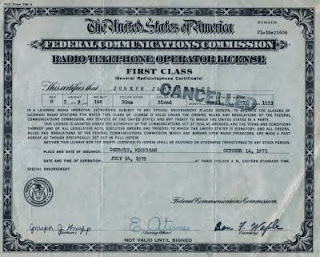
When my license certificate showed up in the mail, I immediately quit my dreadful after-school job as a hamburger-flipper at the neighborhood Red Barn fast food joint and started searching for a job in radio! Of course, I couldn’t find one. Nobody was going to hire an 18-year old radio engineer, license or not.
After graduation, I applied for a job at Ohio Bell Telephone. I was one of at least 100 other applicants so as I rode home on the bus I didn’t think I had much chance of working there. To my surprise, they called me back and offered me a job. Since I had a First Class “ticket” I was automatically qualified to be hired as a “foreman” in the mobile telephone and network television division. I was excited at first, but I quickly learned to hate that job. Everyone working there seemed to be passing time waiting for the weekend, or for their retirement. Jobs that actually took a half hour were always dragged out to an entire work day. When I started doing car phone installations “too quickly” the other guys got really upset. They took me aside and tried to explain how “things work around here!” I wanted out.
 I heard about a new radio station that had been granted a construction permit from the FCC. It would be at 1000 on the dial and licensed to suburban Parma, Ohio. I drove out to the address listed on their application only to find an empty muddy field.
I heard about a new radio station that had been granted a construction permit from the FCC. It would be at 1000 on the dial and licensed to suburban Parma, Ohio. I drove out to the address listed on their application only to find an empty muddy field.
Standing next to a surplus Army Jeep in the middle of that field was an older guy who told me his name was Bill Hull. At that time, Bill was the only person working for the station. He was the Chief Engineer, and it was his job to turn this muddy field into a radio station. My heart beat like a hammer as I began begging him to let me help! I offered to work for him for free. I just wanted to have the experience. He talked with me for a while, learned about my background, and agreed to hire me. He couldn’t pay me anything close to what I had been making at the phone company, but I didn’t care about that. I immediately quit my job, took the huge cut in pay, and started spending every daylight hour at the radio station. We put up a four-tower directional antenna array, then built a cement block building to house the studios, transmitter, and office. It was a daytime-only station running 1000 watts of power (later I ran a bootleg station with more power than that!).
Once we got the station on the air, the owners hired a General Manager. He hired some really interesting local talent, including a guy named Jim Doney who had been doing a TV program called Adventure Road in Cleveland. He also hired Lynn Sheldon who had also been on television doing a children’s show that I liked when I was a kid! He also hired a guy named Ted Alexander who had a massive vinyl record collection in his basement. The station’s programming was pretty interesting. Jim Doney played older music in the mornings, mixed with a lot of talk about Cleveland. Ted Alexander then came on with more current hit music. But the station needed someone to follow Ted and take the controls until sunset forced us off the air. I made an audition tape for the General Manager and applied for that slot — and he gave me the job almost immediately! When WSUM-AM 1000 first hit the airwaves, the last voice heard on that first day was mine! I was using the name Joey James, which is my first and middle names, and I was playing an eclectic mix of modern music, mostly album cuts. My first song on my first show was Changes by David Bowie!
Here’s a newspaper clipping talking about my show on the new station. They didn’t get my air name wrong. I was going to be Joey Adams, but I changed it to Joey James at the last minute.
I left WSUM Radio to become Chief Engineer of WBKC AM 1560 in Chardon, Ohio. At this daytime station, I also managed to get myself on the air — doing the 2:00pm to sign-off air shift playing soft hits.
Despite being on the air for real, I couldn’t get the bootleg radio bug out of my system. Jim and I knew that running a pirate station would endanger our FCC licenses, and our radio careers. It could, in fact, cost us a $10,000 fine and maybe even land us both in jail! Still, we had an itch that just had to be scratched.
To avoid being detected by the FCC, we decided to do special one-day-only broadcasts on just a few random dates throughout the year. We were very careful, of course. We even had people outside with walkie-talkies watching for the FCC trucks so they could alert us before they had a chance to track us down. By this time, we were both real radio engineers, so we knew how to build a professional radio station! When we went on the air for these clandestine broadcasts, we’d be running a 3000 watt FM rig in stereo! We had a mixing console and cart machines, just like a real radio station. We had multi-band audio processing, microphone processing, reverb, and all the other cool toys! We even had a local radio talent “drop in” for a guest show — using fake names of course!
Concerns about getting caught eventually caused us to do fewer illegal broadcasts. We also managed to get the “broadcastin’ bug” out of our systems by doing shows on the local college stations — where we also worked as contract engineers. We even did some secret late night shows on the radio stations where we worked — turning the AM transmitter back on after midnight during a time period where the FCC allowed daytime-only stations to operate for brief “test” broadcasts. Our test broadcasts featured wild rock and roll and crazy screaming disc jockeys! We had to cut this out at one station when we started getting letters from listeners in Europe!
How ironic is this? As Chief Engineer at WBKC, I started getting QSL reports from people who tuned in the “test broadcasts” where my friend Jim and I did clandestine shows late at night!
Here’s something very interesting I found while going through some very old tape recordings in my basement. This is a recording that Jim made of ME doing a station identification on my very first pirate station back in 1966. I was 13 years old at the time! He recorded this from his house, seven miles away from my illegal transmitter. The quality isn’t great, but you should be able to make out a very young teenage version of Joe Knapp saying, “This is WAMF radio, 1610, in Cleveland, Ohio.” I follow that announcement with Hungry by Paul Revere And The Raiders, which was a current hit at the time!
I guess it’s just not possible for me to do a short blog post!
Here’s a list of some of the pirate radio stations that were operating in Cleveland in the mid-1960’s:
1963 – KDJ 540 AM in Parma (shut down by the FCC in January 1964.)
1964 – WDJ 540 AM in Parma (probably the same kids!)
1964 – WCBN 1610 AM (a kid who called himself Alfie.)
1965 – KOS 1560 AM (with The Mad Pad and Captain Sly!)
1967 – WTOO 1500 AM (shut down by the FCC in Summer 1967.)
1966 – W??? 1040 AM (a kid named Lenny who was shut down fairly quickly by the FCC.)
1966 – WMCC 910 AM (one of my friend Jim’s many stations!)
1967-1968 – WMCC 1580-1610 AM (more of Jim’s stations! He used the name Jim Walters.)
1967 – WALF 1580 AM (this was Alfie again!)
1968 – WMCC 1610 AM (my friend Jim, when I finally got in touch with him by phone.)
1968 – WAMF (aka WSEX) 1610 AM (this was my station!)
1968 – WAKY 1580 AM (Wacky radio, my friend Jim. Shut down by the FCC November 1968.)
1968 – ???? 1580 AM (a 1500 watt AM bootleg station operated by my friend Mike!)
1968 – WNTR 1610 AM (a kid named Tony from Shaker Heights doing ‘Winter-Radio’.)
1968 – WAB 1610 AM (from somewhere around Scranton and Holmden in Cleveland.)
1968 – WAKY 1580 AM (back on the air in Parma Heights at ‘Fred’s’ house.)
1968 – WBRD 1580 AM (it’s Fred Fodd back on the air with 1000 watts for one night only!)
1968 – WXEL / WAVY / WXYI / WNBK 1610 AM (that Don kid after getting caught!)
1968 – WCDJ / WEID 1610 (black kids in Maple Heights playing soul music. Great station!
1969 – WEST 1610 AM (a kid named Rich from Maple Heights running 90 watts.)
1969 – WKDV / WKOV 1600 AM (a kid named Lyle from Garfield Heights.)
1969 – WILD 1610 AM (hey, it’s ME again!)
1969 – WBST 1610 AM (somewhere on the west side of Cleveland.)
1969 – WZAP 980 AM (1000 watt X-mas broadcast from Cleveland with Mike, Jim, and me!)
1969 – WCFS / WNTR 1610 (a friend of Tony, this was Al from 177th in Garfield Heights.)
1970 – WANG 1615 AM (an under-modulated 75 watt station run by Bob from Berea.)
1970 – WKDJ 1610 AM (a kid named Bruce running a 90 watt station.)
1970 – WINO 1580 AM (a kid named Al from Cleveland using WKDJ’s transmitter.)
1970 – WILD 1580 AM and 1610 AM (a kid named Dave who was caught in just one month.)
1970 – WTDR 1610 (a kid from Bedford running an under-modulated 75 watts.)
1971 – WMHR 970 / 980 AM (a guy named Don from Maple Heights with 75 watts.)
1971 – WEMC 1580 AM (weird, records at the wrong speed. 143rd & Crawford in Cleveland.)
1971 – WROO 104.9 FM (Mike, Jim and me again, 250 watts on FM and 1500 watts on 910 AM.)
1972-1973 – WINR (Christmas day broadcasts by a kid named Bruce. The FCC guys are home!)
Others I remember include:
WPCC/WPCK 1500 AM on Cleveland’s west side.
WARG 1610 AM run by a guy I ended up working with on my first ‘real’ station!
WAM 910 AM nice strong signal, but I don’t have a clue who it was.
WAXC 610 AM from Euclid playing religious music!
WQSN 1610 AM also unknown.
KLW-TV Channel 6 – that’s right, bootleg television from Parma Heights!
And some unidentified bootleg broadcasts on 6000 KHz as Radio Free Cleveland.
And finally, here’s an article from Communications Handbook 1967 that talks about Radio Caroline, DX-ing and QSL cards! Check out the picture of an actual QSL card that came from Radio Caroline! Click on the image to blow it up a bit.
Many years ago I started writing a book about pirate radio stations in the USA. Here’s a little excerpt from my notes. I was talking here about the ‘future’ of pirate radio:
“Who knows? In this day and age of technology and education at an early age, there may be more youngsters who will take the easy short cut to the glamorous field of broadcasting. They may even now be dreaming of, or building, their first illicit transmitter, impatient to hear their own voice on the radio. And, if you’re lucky, you might be tuning around on the radio one day and just happen to land upon a tinny-sounding station with no commercial interruptions, but a whole bunch of ‘Testing one, two, three…’ announcements!”
There ARE pirate radio stations on the air all over the USA. Another one in San Francisco calling themselves Pirate Cat Radio was just closed down recently, although they continue operations on the Internet. Internet radio provides a great outlet for those who want to ‘broadcast’ without breaking the law. You don’t need a license or a frequency! It’s certainly the way I’ve gone and I highly recommend it if, like me, you’re ‘addicted’ to radio. (Of course, I do have a 10-watt FM stereo transmitter sitting in my office that I never turn on. It’s just there in case I need an ’emergency broadcasting fix’ someday!)
Here’s an Associated Press article from Summer 1974 talking about pirate radio stations in Detroit. The FCC office director, Edward Atems, mentions the activity in the Cleveland area. Ed Atems is the same guy who signed my FCC license!
I only use first names in this post to protect the innocent. If any of my old pirate radio friends are reading this — and you know who you are — please post a comment or shoot me an email to say hello. If you were a pirate broadcaster back in the day, I’d love to hear from you too. Tell me about the station you ran. I’m putting together notes and audio tapes with the hope that one day I can turn it all into a book. Who knows? I just might have tape recordings of your station that you didn’t know existed, and vice-versa!
I dedicate this post to my dad, who passed away recently at the age of 83. This photo shows my grandfather, my mom, my dad, and my grandma. Rest easy folks — you done good.

